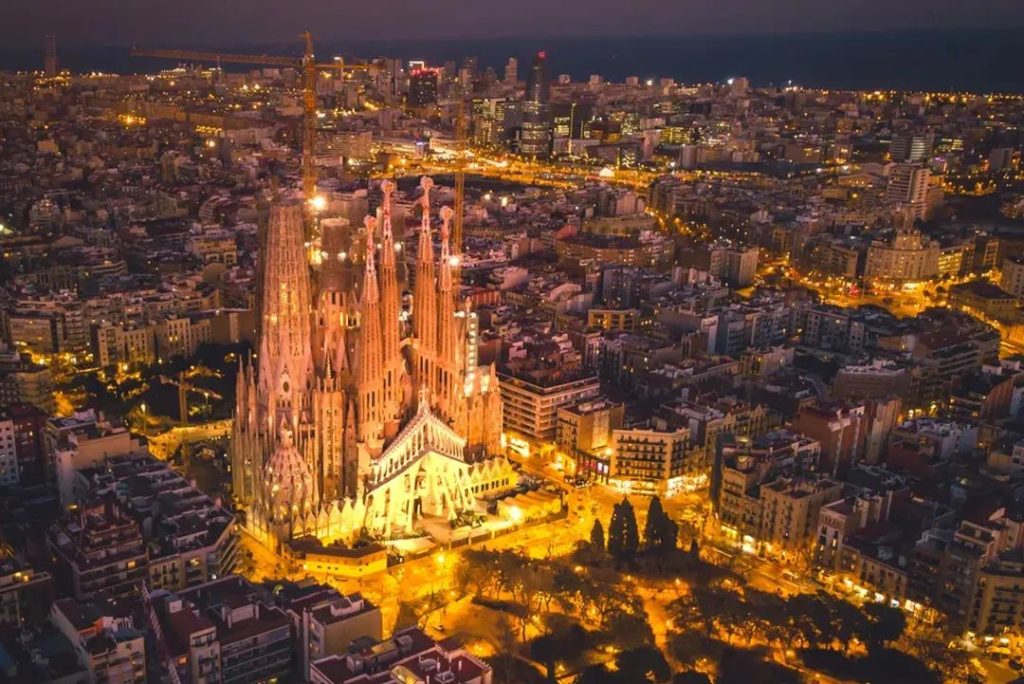The Sagrada Familia in Spain stands as the world’s largest “unfinished symphony” in construction, having been under development for 138 years and still incomplete. Despite its prolonged construction period, this iconic cathedral has been honored by the United Nations Educational, Scientific and Cultural Organization (UNESCO) with the prestigious designation of a World Heritage Site.

In 2021, a significant event unfolded in the world of architecture. On December 8th, local time in Spain, the Sagrada Familia Cathedral in Barcelona reached a major milestone. The main tower, known as the Tower of the Virgin Mary, was crowned with a twelve-pointed star-shaped spire, and the Star of the Sagrada Familia was illuminated.
This momentous occasion marked the culmination of the construction of the cathedral that spanned three centuries, signaling the beginning of the final phase of its completion.
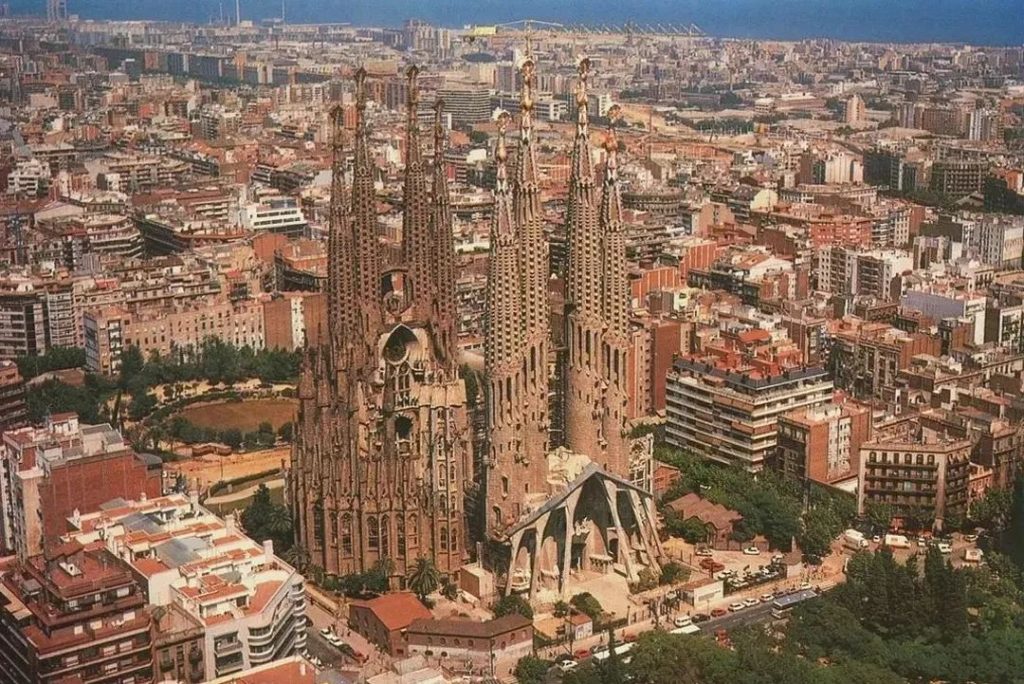
The construction history of the Sagrada Familia Cathedral dates back to 1872. The initial idea to build this cathedral was proposed by Joseph Maria Bocabella, a Barcelona-based bookseller and founder of the “Religious Association of Saint Joseph.” Inspired after visiting the Vatican’s St. Peter’s Basilica, he felt a surge of ambition, declaring, “Our Barcelona cathedral must not be inferior to the Vatican!”
Subsequently, he mobilized religious groups for funding and enlisted the architect Paul Vilaseca to oversee the construction.
In 1882, construction commenced on the Sagrada Familia with the initial intention of creating a Gothic Revival cathedral. Within just one year, the underground crypt was completed. However, disagreements arose, leading the then-designer, Vilaseca, to withdraw from the project after only a year. Fortunately, he recommended his student, Antoni Gaudí, to take over. At the young age of 31, despite lacking significant architectural experience, Gaudí embraced the challenge, fundamentally reimagining the design of the cathedral.
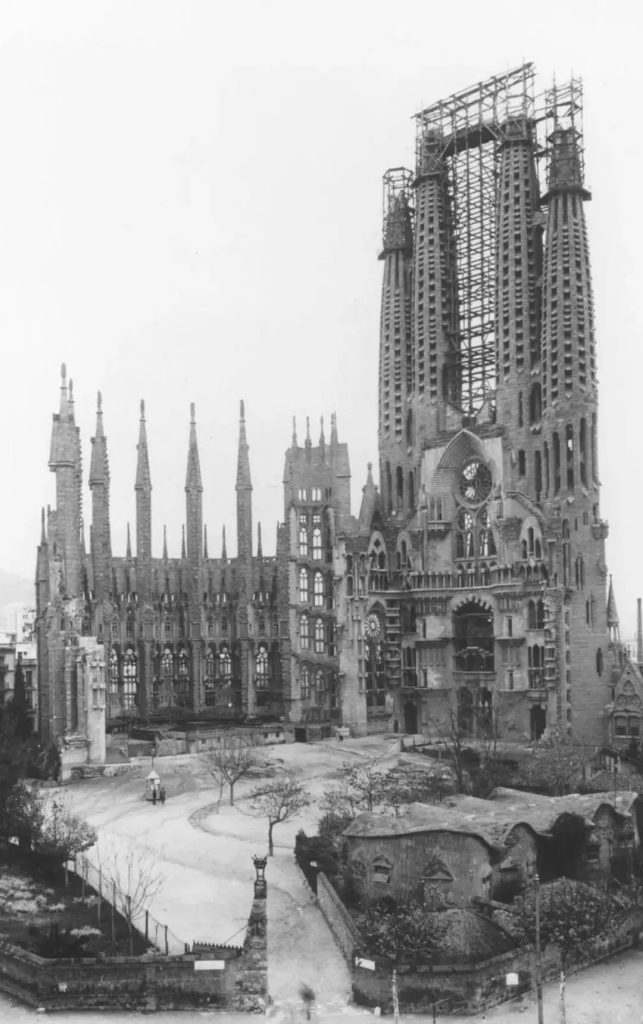
Under Gaudí’s leadership, the cathedral underwent a remarkable transformation. He personally oversaw various aspects of the construction, including the rear facade, the “Nativity Facade,” the tower symbolizing the 12 apostles, and the doors and windows. However, the construction process faced challenges without government or official church funding, relying solely on donations and ticket revenues. Gaudí even encountered financial difficulties, prompting him to deviate from the normal construction process. He prioritized completing the outer shell to showcase its grandeur, attracting donations. When donations were insufficient, he took on other projects during forced construction pauses, using the proceeds to continue building the Sagrada Familia.
Aware that he wouldn’t live to see the completion of the cathedral, Gaudí crafted a model to facilitate future generations taking over. In 1926, Gaudí passed away, leaving the Sagrada Familia only a quarter complete.
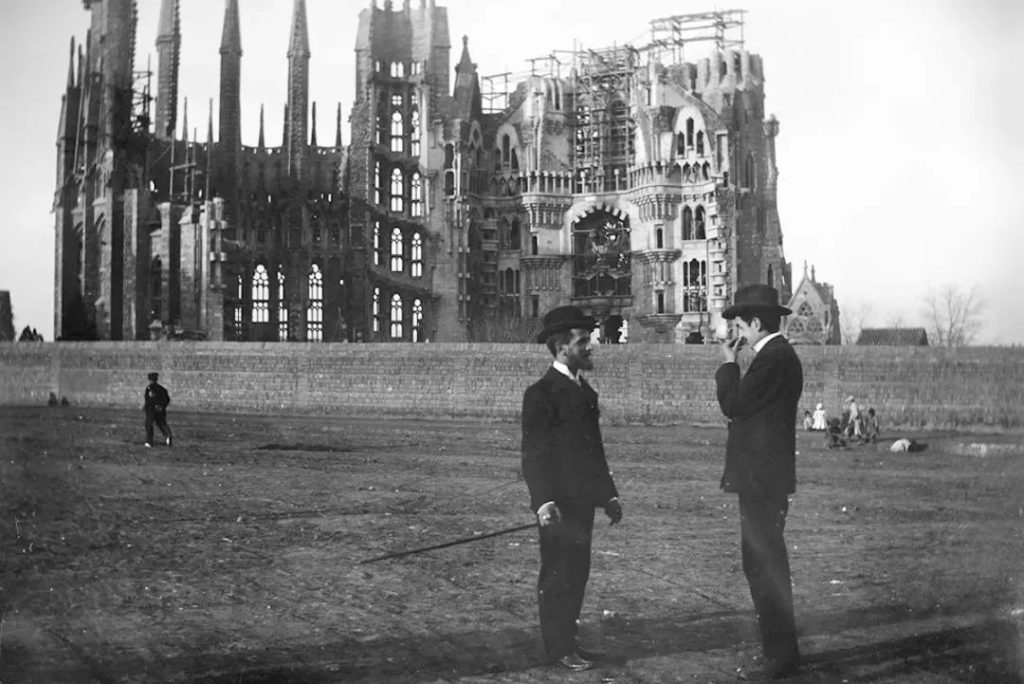
The design of the Sagrada Familia Cathedral follows the Latin cross plan, featuring five aisles. At the convergence of the cross, four granite columns support a massive double-curved structure, surrounded by twelve currently under construction double-curved surfaces forming a circular arrangement.
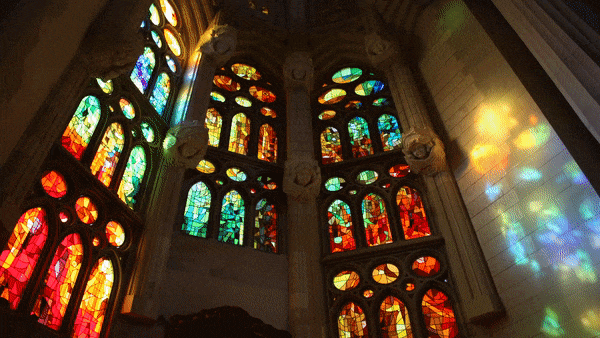
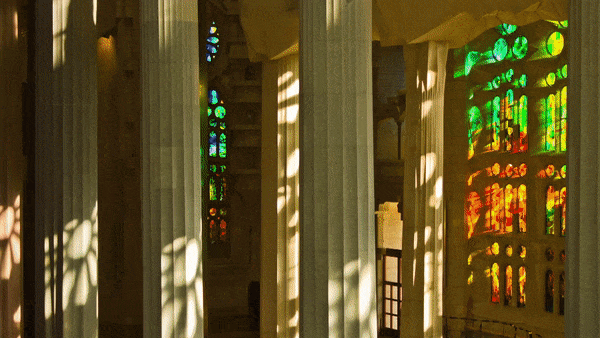
Unlike other churches, the stained glass windows of the Sagrada Familia do not depict images of saints. Instead, they cleverly utilize light effects to enhance the cathedral’s captivating and solemn atmosphere. When sunlight passes through these windows, vibrant colors traverse the walls and columns, making the entire cathedral come alive.
Currently, the official announcement states that the Sagrada Familia Cathedral will be completed in 2026, coinciding with the 100th anniversary of Gaudí’s passing. Let us eagerly anticipate the day when this “in one’s lifetime” architectural marvel is finished, illuminating the night sky of Barcelona and lighting the way home for Gaudí.
